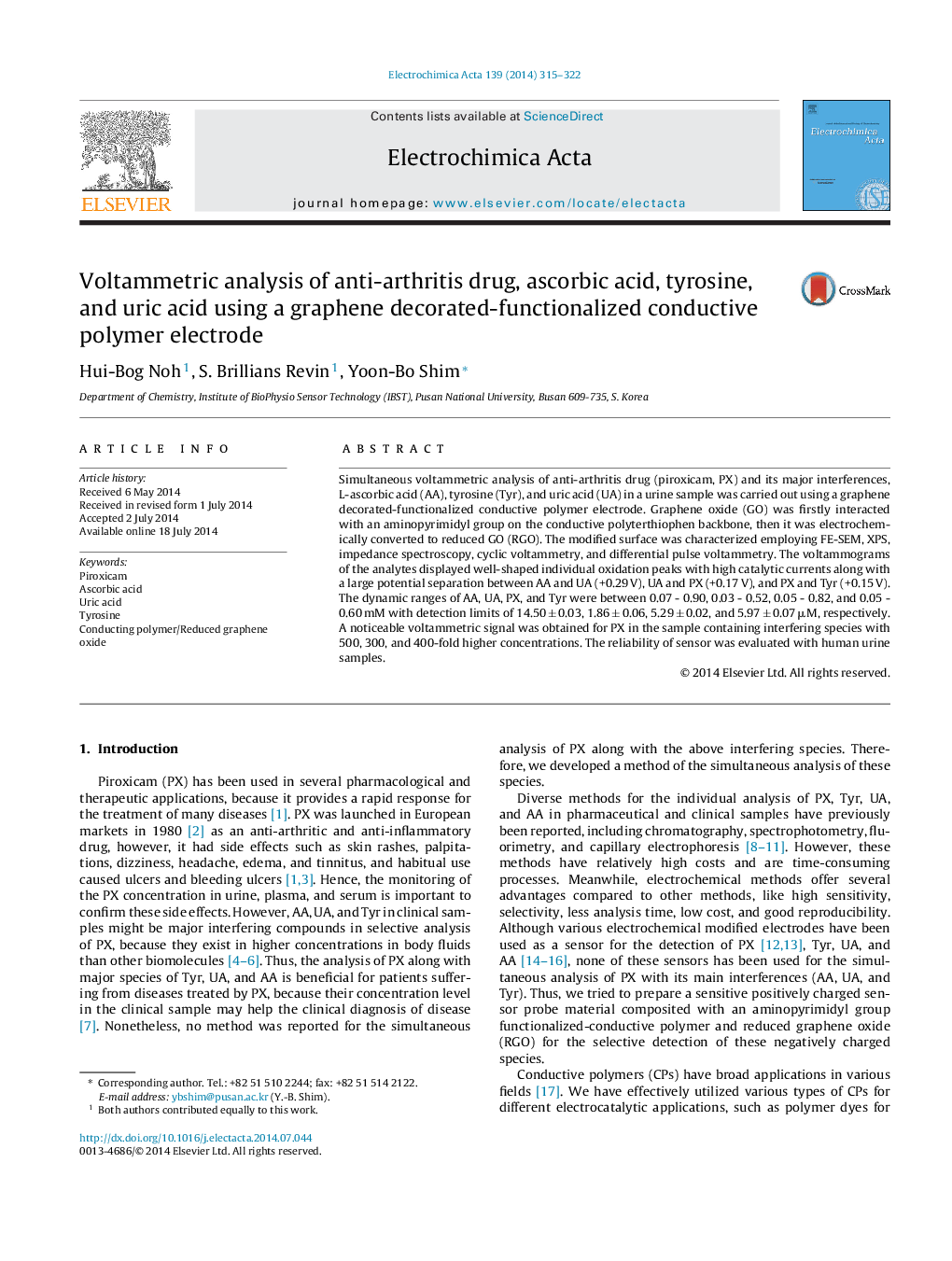| Article ID | Journal | Published Year | Pages | File Type |
|---|---|---|---|---|
| 185362 | Electrochimica Acta | 2014 | 8 Pages |
•We developed a p-APT/RGO sensor to simultaneously detect PX along with AA, UA, and Tyr.•PX is detected in the presence of 500-fold higher concentrations of the major biomolecules.•The linear dynamic range of the sensor was between 0.03 and 0.90 mM (DL: 1.86 ± 0.06 μM).
Simultaneous voltammetric analysis of anti-arthritis drug (piroxicam, PX) and its major interferences, L-ascorbic acid (AA), tyrosine (Tyr), and uric acid (UA) in a urine sample was carried out using a graphene decorated-functionalized conductive polymer electrode. Graphene oxide (GO) was firstly interacted with an aminopyrimidyl group on the conductive polyterthiophen backbone, then it was electrochemically converted to reduced GO (RGO). The modified surface was characterized employing FE-SEM, XPS, impedance spectroscopy, cyclic voltammetry, and differential pulse voltammetry. The voltammograms of the analytes displayed well-shaped individual oxidation peaks with high catalytic currents along with a large potential separation between AA and UA (+0.29 V), UA and PX (+0.17 V), and PX and Tyr (+0.15 V). The dynamic ranges of AA, UA, PX, and Tyr were between 0.07 - 0.90, 0.03 - 0.52, 0.05 - 0.82, and 0.05 - 0.60 mM with detection limits of 14.50 ± 0.03, 1.86 ± 0.06, 5.29 ± 0.02, and 5.97 ± 0.07 μM, respectively. A noticeable voltammetric signal was obtained for PX in the sample containing interfering species with 500, 300, and 400-fold higher concentrations. The reliability of sensor was evaluated with human urine samples.
Graphical abstractFigure optionsDownload full-size imageDownload as PowerPoint slide
